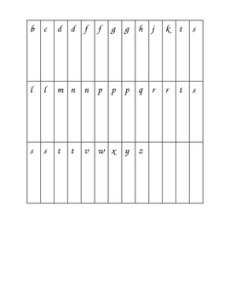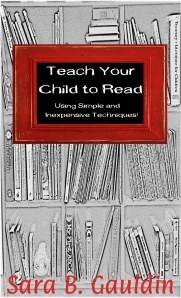Teach Your Child to Read! m + a + p makes the word map!
After your child has had ample opportunity to use and explore words that they can decipher using word families, it is time to spend some quality time exploring the relationships between vowels and consonants. Essentially consonants are fairly consistent with the sound they are said to make (with the exceptions of c, g and y). The English language takes bits and pieces from countless sources, so for every rule there is an exception. In most words consonants make the sound your child had been learning all along. The vowels are a bit more versatile, and much more essential to the structure of a word. For the purpose of beginning word building it is best to stick with short vowel sounds. Short vowels are the letters a, e, i, o and u when they make their traditional letter sound. Vowels that make other sounds or say their own names are not short vowels.
Try This!

Use Push and Say it Letters (http://www.teacherspayteachers.com/Product/Push-and-Say-it-Letters-538214) to chunk and blend words. These tiny slips of paper feature each letter in a lower-case format with a space at the bottom that is left blank to allow a child to move the letter with their finger. I printed mine on card stock and laminated the ones at work to make them last. A simple print out on regular paper will work just fine. Cut the letters apart. Lay the letters facing the same direction out on a table in front of your child. Ask your child for a specific vowel sound first. “Find the letter that says “ahh”. When the child finds the specific letter, have them pull the letter out to the side and away from the other letters. Next, ask your child to find the beginning sound. “Find the letter that says “buh”. When the child finds the letter ask them to place it in front of the “a.” Now have your child look for the ending sound. “Find the letter that says “t”. Have your child position the letter at the end of the word. Finally, have your child say the sound of each letter as they move them together. After several practices, they should be able to see that the word is “bat.” From here it is easy to ask them to take off the “b” and replace it with another letter. Make sure that when you ask for letters, you are using the letter’s sound rather than its name.
Make a set of 26 lowercase letters on cards. These can be used in the place of push and say it letters for the same activity. The only drawback is when you reuse the materials for longer words you will not have all the letters you need.
Return to Starfall to focus on the second-level activities. Incorporate the digital books here as well as the previous word families. In each digital book, guide your child to put the mouse under each word. The web site will blend the word and help your child to put the phonics features to together to form a meaningful word.
This is the stage that the tag readers and other automated reading system marketed to children are effective, but not absolutely necessary. If you already have the system or can pick one up for a relatively inexpensive price at a yard sale or thrift shop, then now is the time to make use of it.
Leapfrog markets a variety of word building videos that are of good quality. Again this is only meant to be a compliment to reading and not a T.V. babysitter.
Related articles
Three Tips on how to teach literacy from Infant Literacy Development Expert, Kathleen Roskos. (mpepin1.wordpress.com)
Planning literacy teaching (hannasadventuresinteaching.wordpress.com)
Reflective Response (jherrdesign.com)
important early literacy terms that every parent needs to know (teachmama.com)
Improving Early Literacy at Green Magnet Elementary (childrenareourtreasure.wordpress.com)
Language and Literacy (capitalareaspeech.wordpress.com)
Literacy and Teachers (parra67.wordpress.com)
50 ways to teach how to read (funlanguagefun.wordpress.com)






